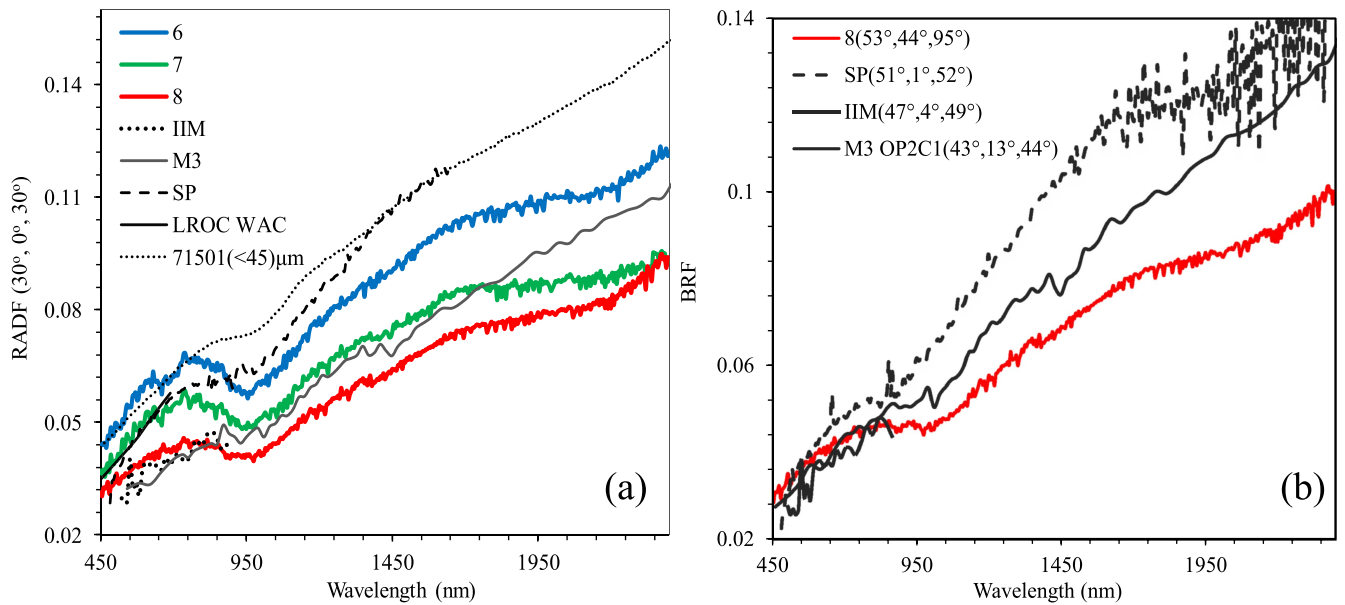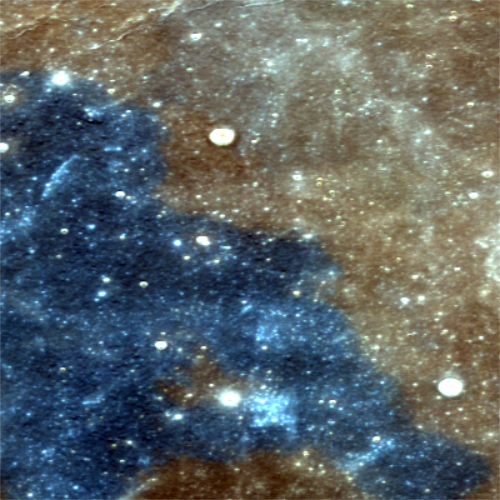How bright is the Moon? This looks like a very simple question but very important and difficult to answer. Although numerous efforts have been made, the answer is still debated. An in situ measurement with a calibration panel on the surface of the Moon is crucial for obtaining the accurate absolute reflectance and resolving the debate. China’s Chang’E-3 (CE-3) mission acquired the first in situ reflectance of the Moon using the Visible-Near Infrared Spectrometer (VNIS) onboard the “Yutu” rover. The VNIS in situ reflectance show that the absolute reflectance of the CE-3 landing site is very low, indicating that the CE-3 landing site is rich in FeO and TiO2. With large amounts of comparison (Fig. 1), it reveals that the measurements of the LROC WAC and SP are higher and redder. The measurements of M3 OP2C and IIM are lower and bluer than those of LROC WAC and SP. The measurements of the VNIS fall between these two pairs. The laboratory reflectance of returned samples is much higher than the pristine regolith and is inappropriate for the calibration of orbital instruments. The CE-3 landing site is proposed to be a new calibration site. Compared to those frequently used calibration sites such as MS-2, Apollo 15, and Apollo 16 Highlands, the CE-3 calibration site is much younger and less impacted and contaminated (Fig. 2). This paper was published in The Astronomical Journal, 2018, 155:213 (18pp). Detailed information of the paper can be found at: https://doi.org/10.3847/1538-3881/aabaf5. 
Fig 1. (a) Comparison of RADF of the VNIS with orbital missions (IIM, LROC WAC, SP, and M3) and lunar sample. (b) Comparison of the BRF of the VNIS with those of IIM, SP, and M3. 
Fig 2. LROC WAC enhanced color mosaic image centered on the CE-3 calibration site. (Information Source: PMO) |

